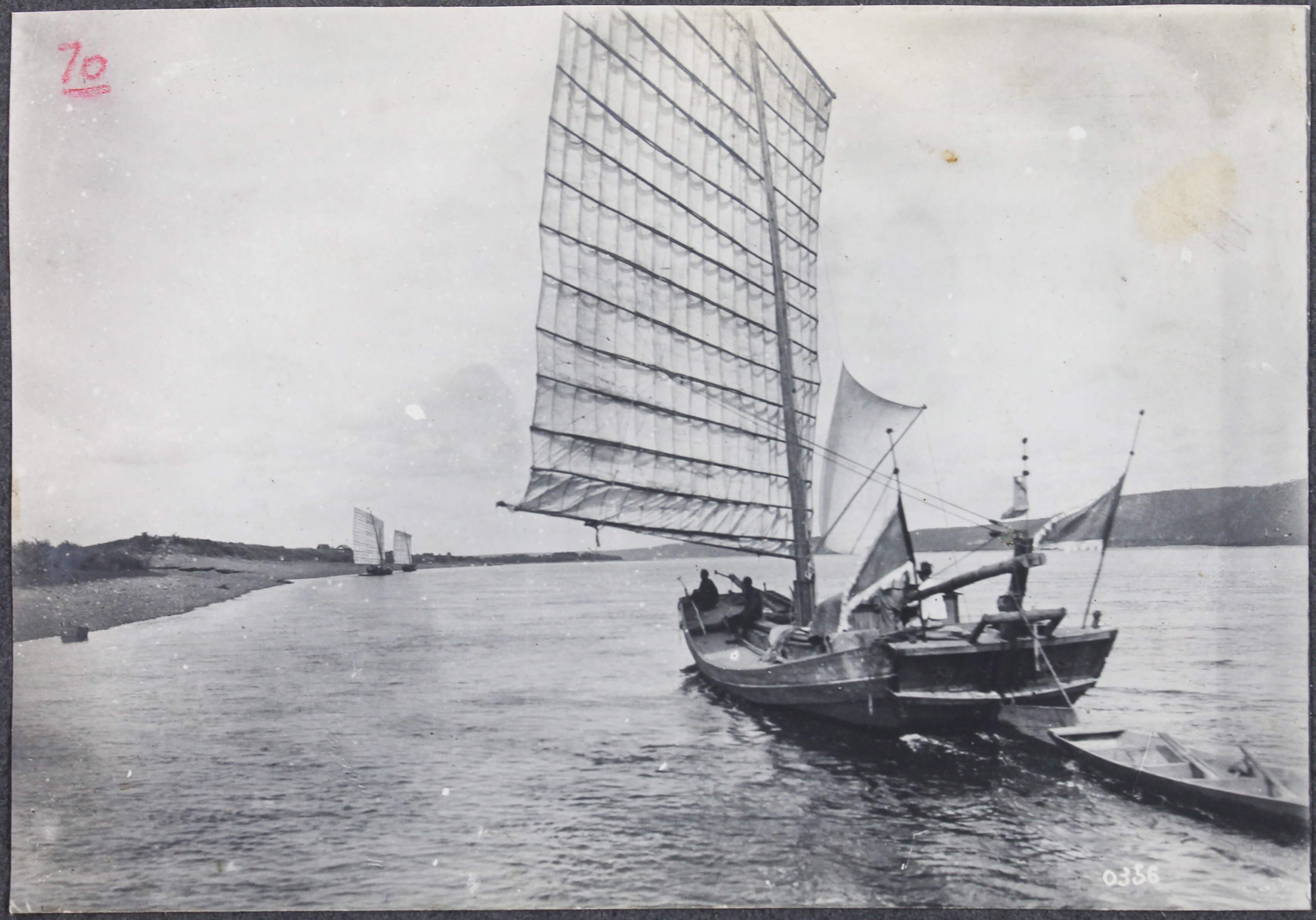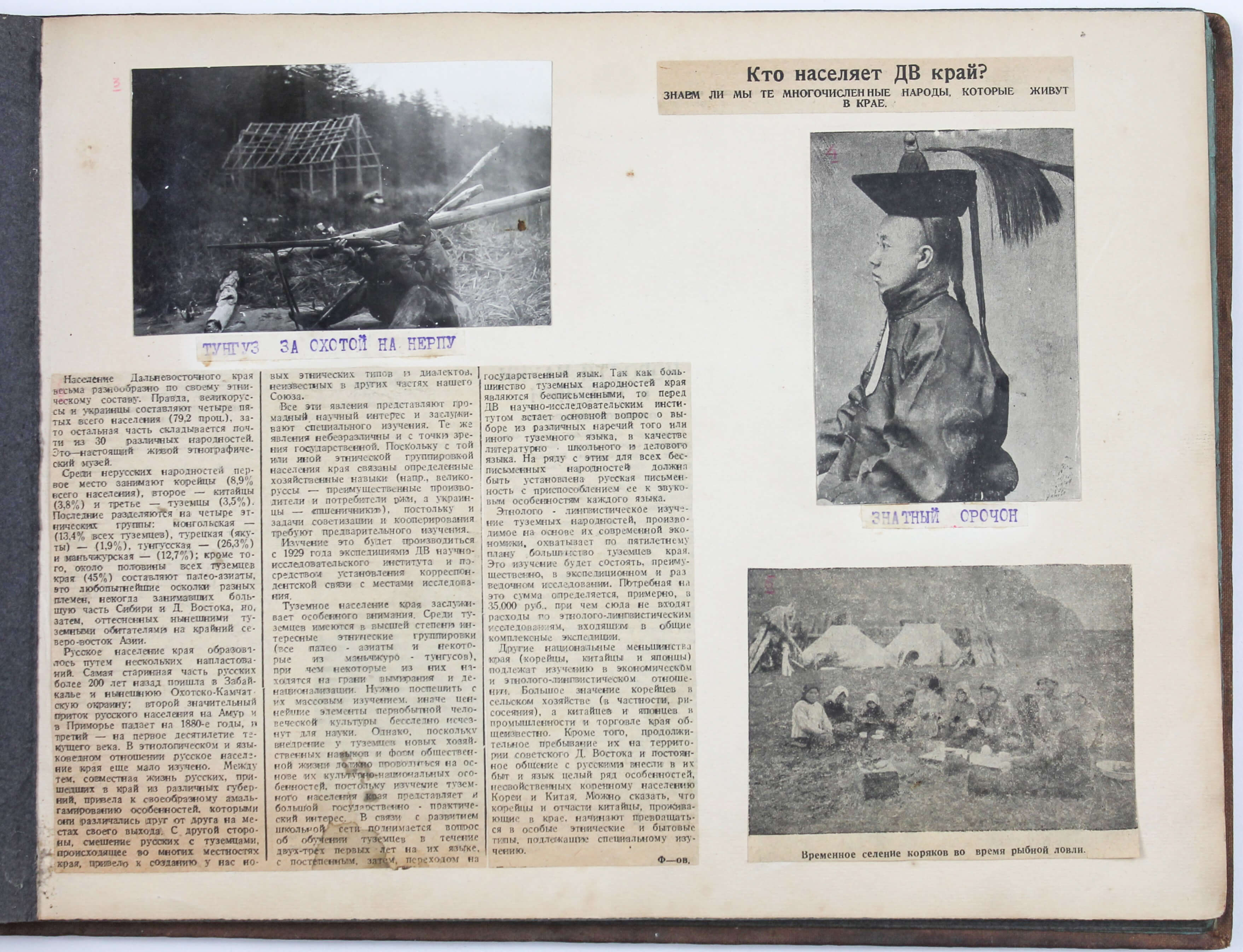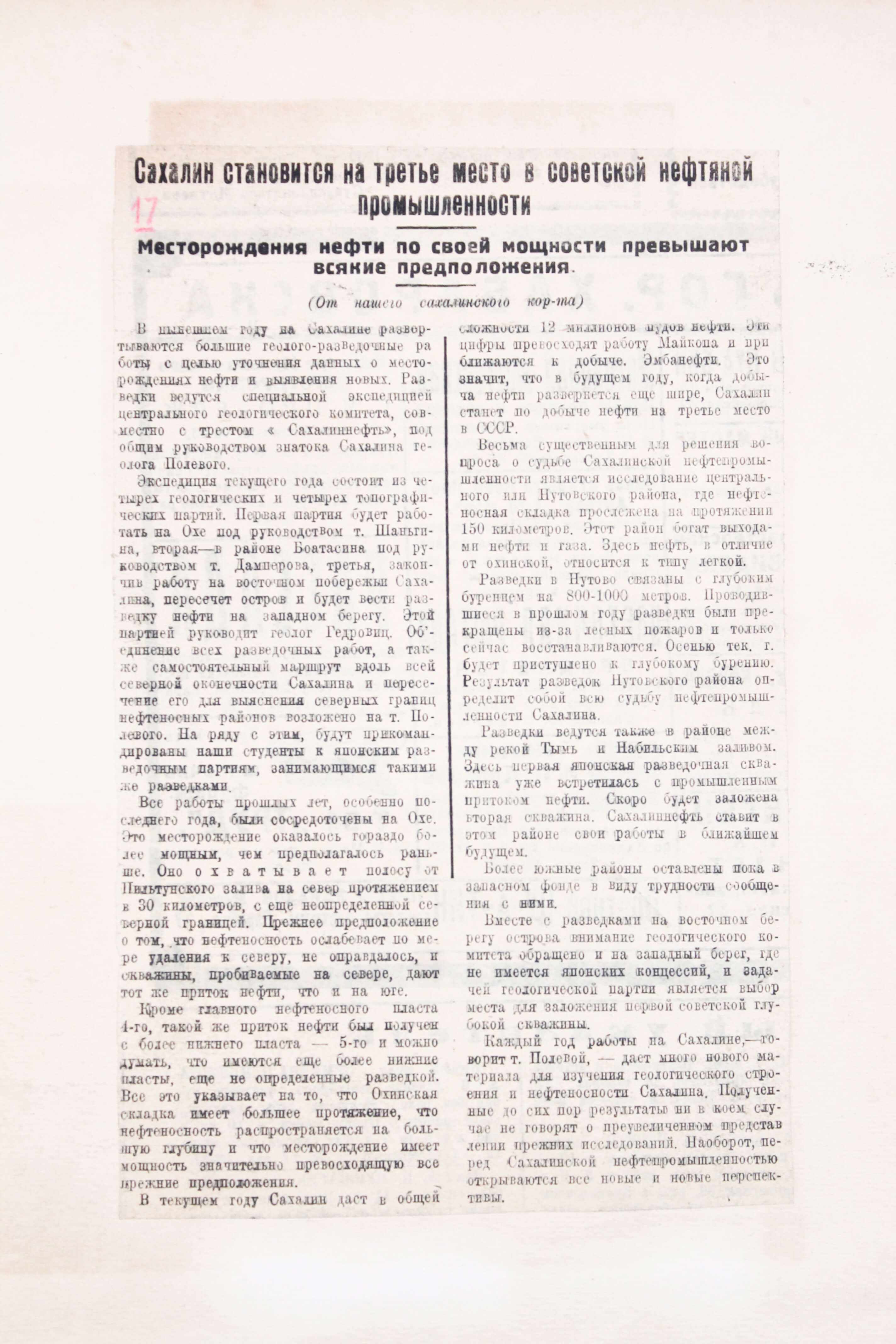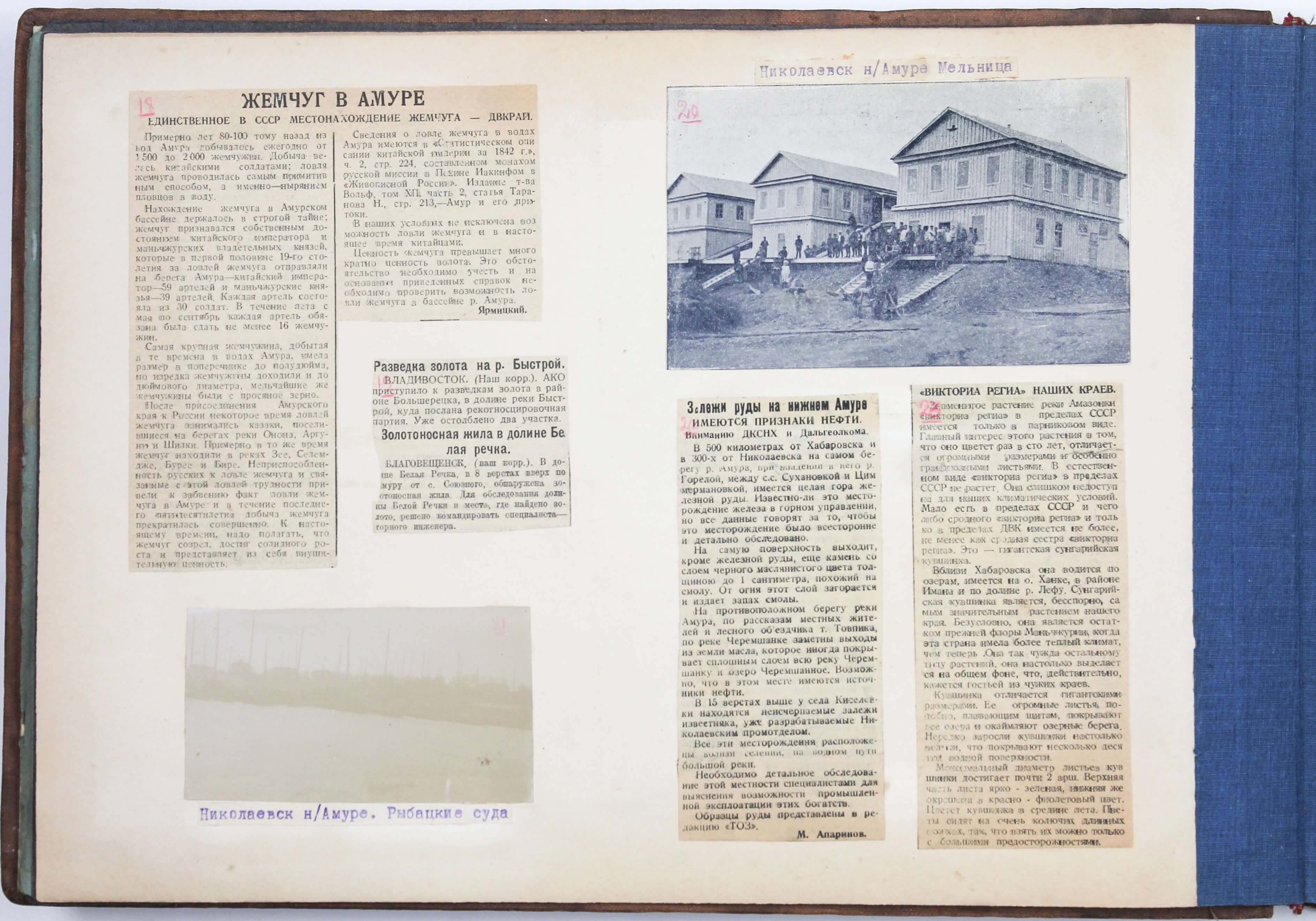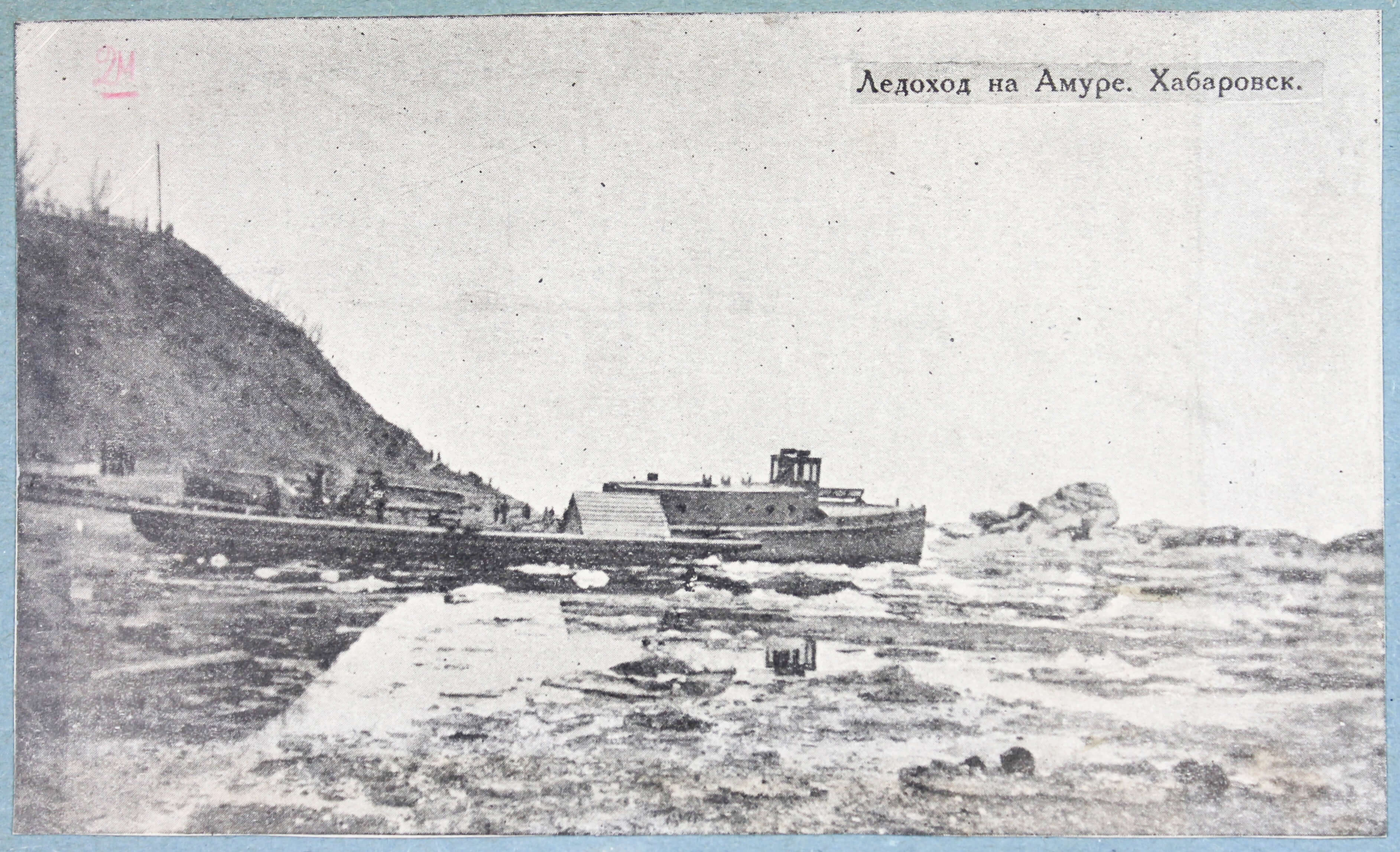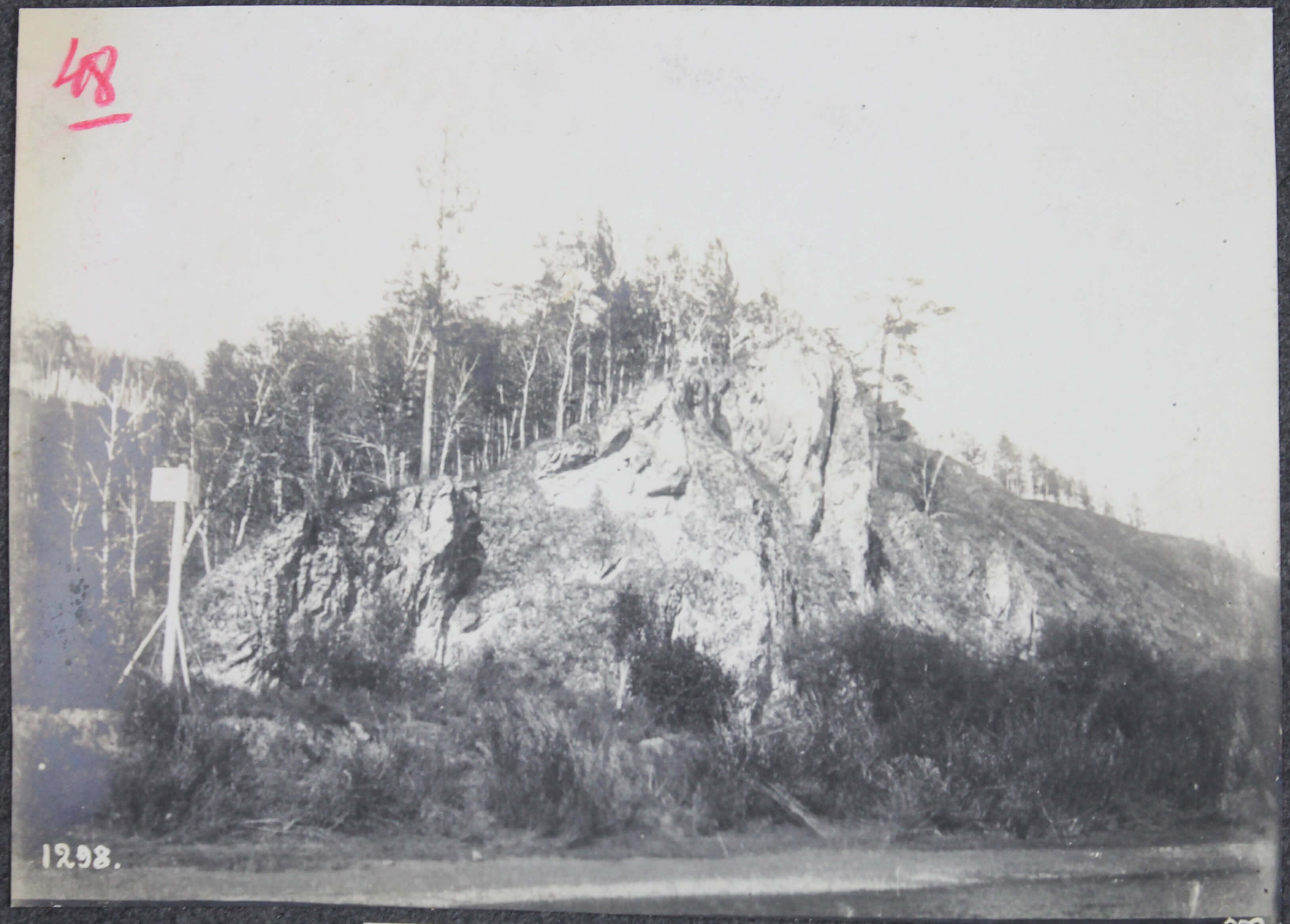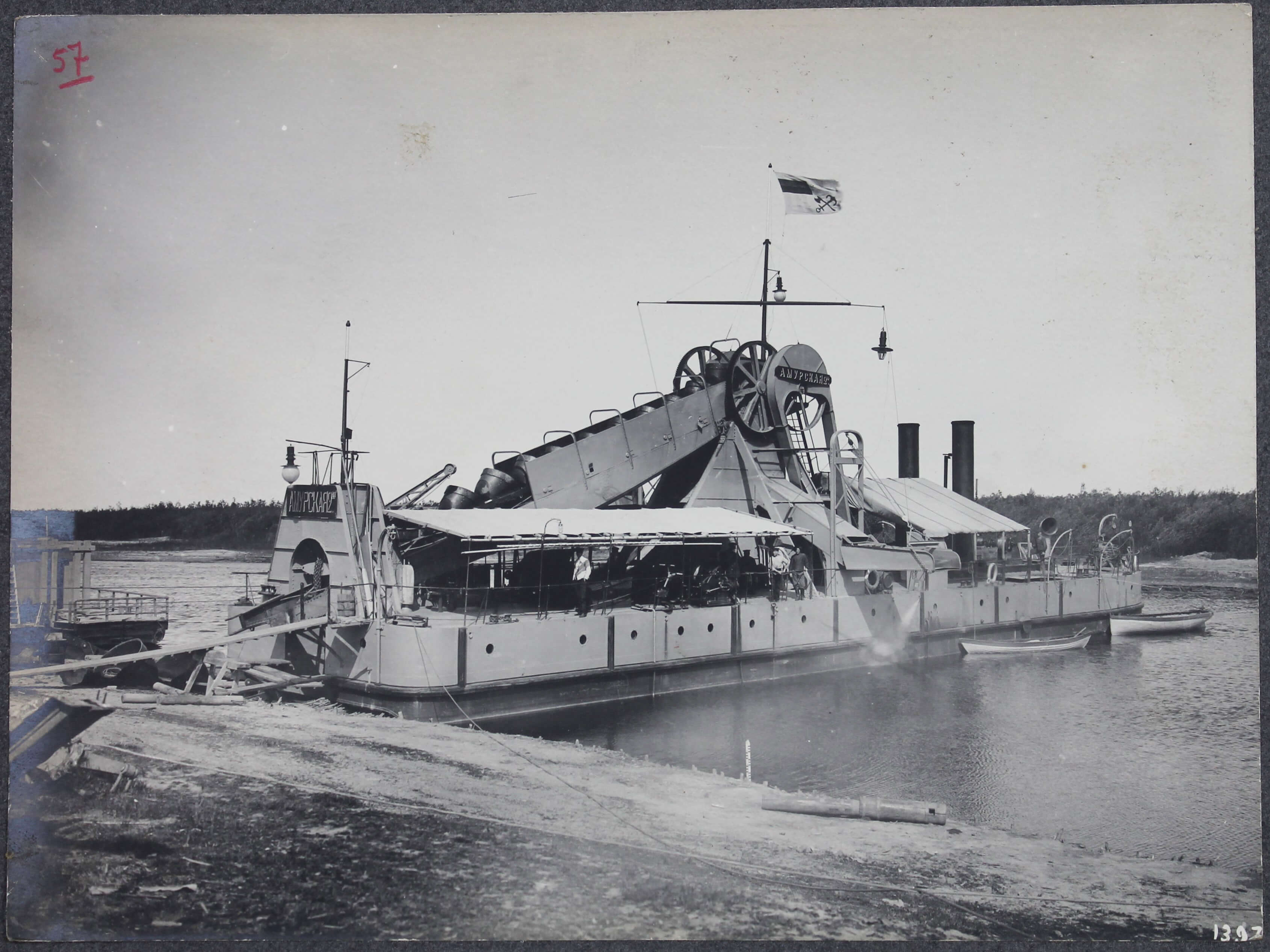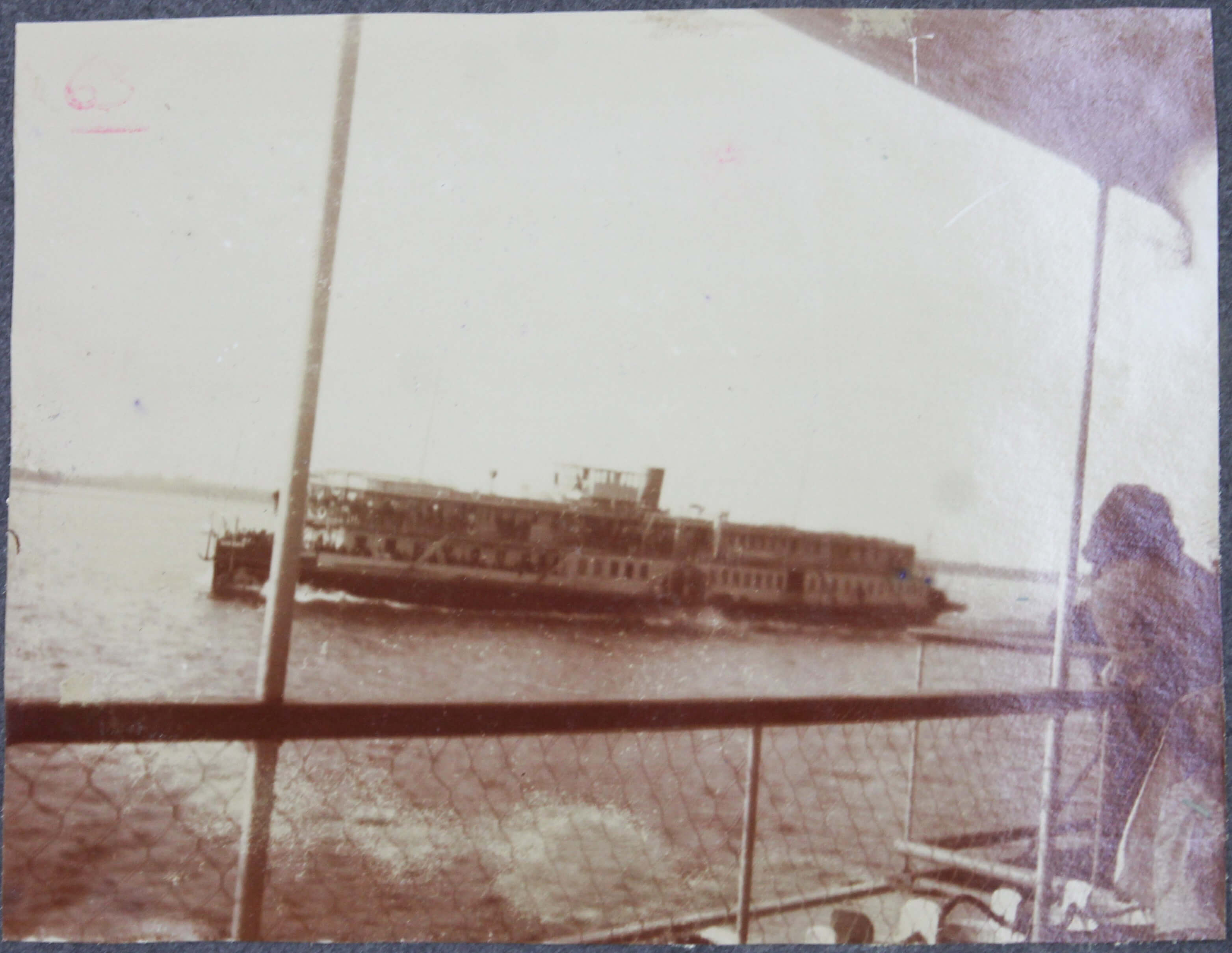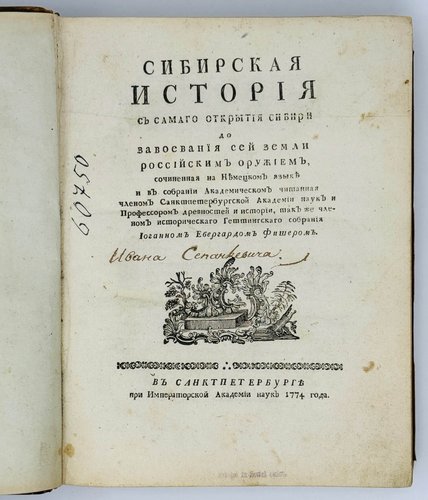






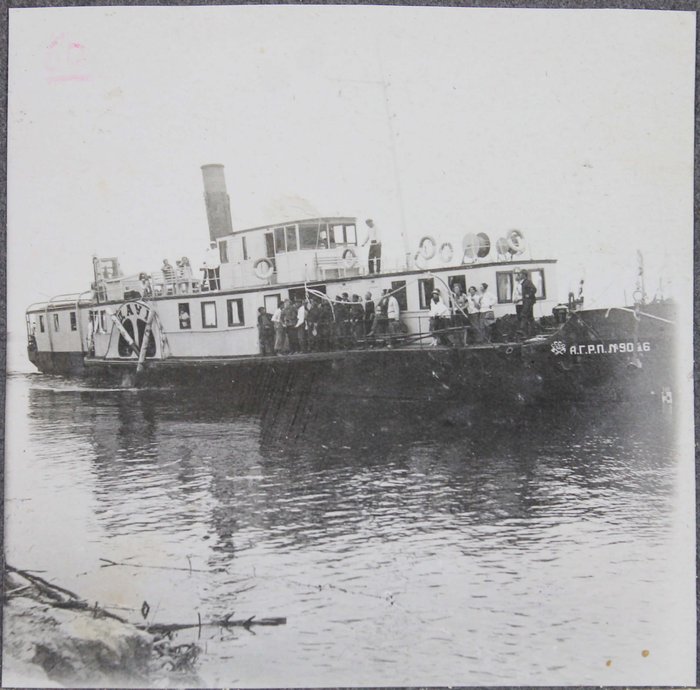












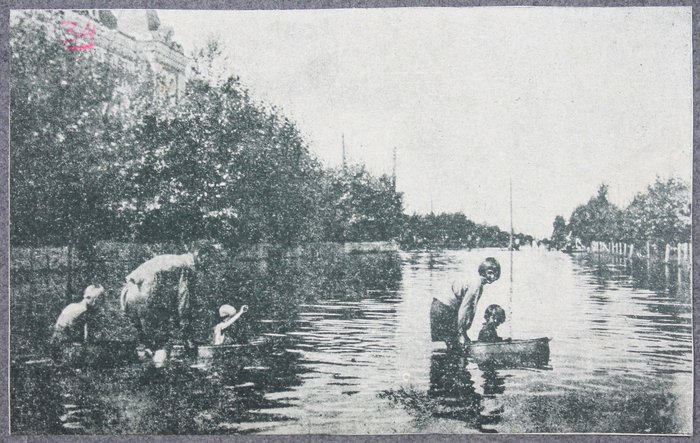


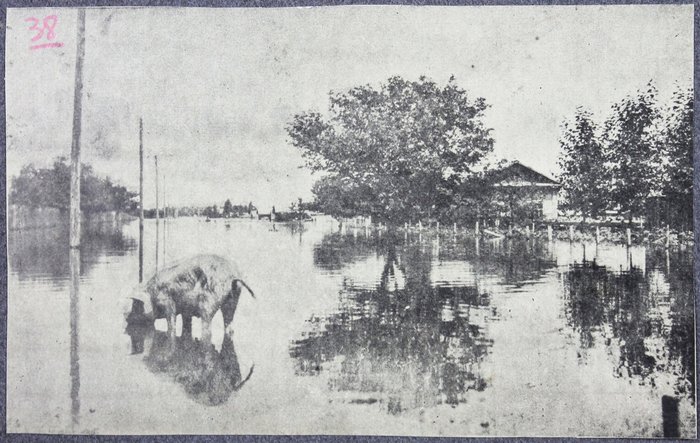
















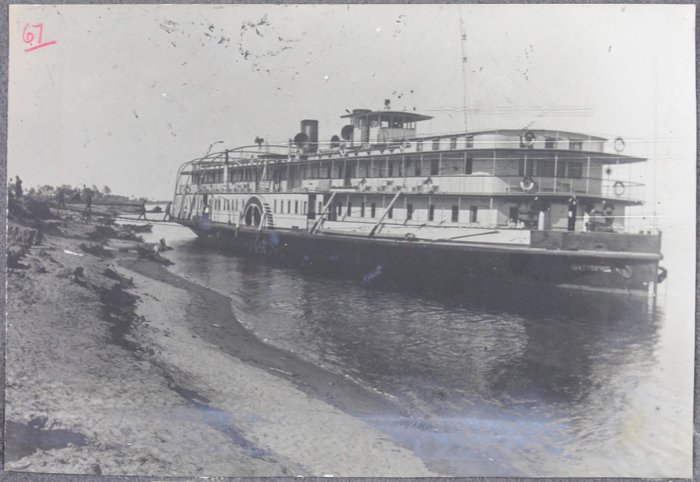











#PD29
Ca. 1920s
Oblong Folio album (ca. 27,3x38,8 cm). 26 card stock leaves. With ca. 37 original gelatin silver photographs from ca. 16,8x23,7 cm (6 ½ x 9 ½ in) to ca. 7,8x7,8 (3 x 3 in), ca. 21 printed postcards ca. 8,6x13,4 cm (3 ½ x 5 ¼ in), numerous black-and-white newspaper clippings, one printed map of the Amur River ca. 11,8x16,3 (4 ½ x 6 ½ in), and one hand-colored schematic map of Nikolaev district ca. 21,1x20,2 cm (8 ¼ x 8 in). Most photos and postcards with period typewritten captions (in Russian) on paper labels attached to the mounts, three photos dated, nine photos numbered in negative, most photos, postcards, and photo clippings numbered in manuscript. Period brown full cloth album with the printed title “Al'bom Amurskogo Basseyna” on the first page. Boards with damp stains, several photos slightly age-toned or with mild silvering, but overall a very good scrapbook with strong, interesting photos.
Scrapbook with ca. thirty-seven rare original gelatin silver photographs, twenty-one printed postcards, sixty photo & text clippings from Soviet newspapers, and two maps documenting the Amur River Basin in the late 1920s. At the time, amid growing concerns over Chinese and Japanese influences in the Far East, the Soviet Union actively sought to develop the potential of its eastern regions, focusing on water transport, mineral exploration, and other critical infrastructure.
As follows from the detailed typewritten captions of the photographs, the compiler was likely involved in river transport, surveying, or related work in the Amur region. He might have been an engineer, a surveyor, or an official with the Amur River Shipping Company (AGRP) or another state-run organization engaged in river management in the Far East. None of the photographs taken by the compiler were found through our research of digital archives and libraries of the Russian Far East.
The scrapbook opens with two rare photographs of Far Eastern natives, showing a Tunguz man hunting seals and Nivkhs in traditional attire laughing aboard a passenger ship. Following are about ten well-executed photos of the Lower Amur region, including views of Khabarovsk’s waterfront, a lookout on the Auri cliff, dredging on the Shilka River, and “ice hummocks near Khabarovsk.” Especially interesting is a large photo of the August 1928 flood, documenting submerged houses and the steamboat Daur rescuing property near Khabarovsk. Seven excellent photographs capture surveying operations in the Upper Amur. The images show the survey party with a tachometer, a dredger convoy en route to Blagoveshchensk, and dredgers Amurskaya 2 & 4 on the Zeya River. One photo also features a meteorological station on the Upper Amur and possibly the compiler himself. About ten rare photos show passenger and commercial vessels from the Amur State Steamship Company (Daur, Komintern, K. Libknekht, etc.), alongside three Chinese vessels (Sipingan, Hai Chang, and Chinese Junk) involved in cargo shipping to/from the Amur River Basin. The photos were likely taken shortly before or during the Sino-Soviet conflict of 1929, a year-long clash over the Chinese Eastern Railway that led to thousands of casualties among Russian and Chinese forces in Manchuria.
The other important scenes capture the steamship Kutuzov sinking at Beytonovsky Passage, the court committee of the steamship Komintern reviewing an agreement on socialist competition, and workers of the Amur State Steamship Company loading firewood on Industrialization Day in 1929.
The scrapbook is supplemented with about twenty-five text clippings from the 1920s Soviet newspapers, focusing on Far Eastern natives and the development of fishing, tourism, river transport, and mining in the Amur River Basin. A recurring theme is derogatory sentiment towards the Chinese, with several articles discussing accusations of Chinese involvement in kidnapping Russian women for prostitution and exploiting Russians with high-interest loans. Particularly interesting is Maks Polynanovsky’s article about the Chinese town of Heihe (then part of Manchuria), where Soviet tourists encountered fascist signs and Chinese smugglers. Another intriguing piece, "Colonization in the Far East and Waterways of Communication," advocates for the development of shipping on the Ussuri River (referred to as the "border river with Manchuria"), arguing it would eventually lead to the colonization of Manchuria (notably, Manchuria was occupied by Japanese forces in 1931). Other articles discuss Sakhalin's role in the Soviet oil industry and the steamship Chicherin accident.
There are also twenty-one extremely rare, printed postcards and numerous black-and-white photo clippings, showing "Noble Orochon," "Gilyachka," “Nanai girl-bride”, "Izvestka checkpoint," "temporary settlement of the Koryaks during fishing," "fishing outposts in the lower reaches of the Amur," “ice drift on the Amur," “flood on the Amur in 1928,” "fishing harbor of Nikolaevsk-on-Amur," "mill in Nikolaevsk-on-Amur," "views of Nikolaevsk-on-Amur," "Japanese timber carrier 'Imago' loads timber in Nikolaevsk-on-Amur," "Blagoveshchensk under water in 1928," "city of Khabarovsk, view from Artillery barracks," "city of Khabarovsk, Frunze Street," "departure of a survey party to the Onon River," etc.
Overall, historically important scrapbook with original gelatin silver photographs, printed postcards, and numerous newspaper clippings documenting the Amur River Basin in the late 1920s.










